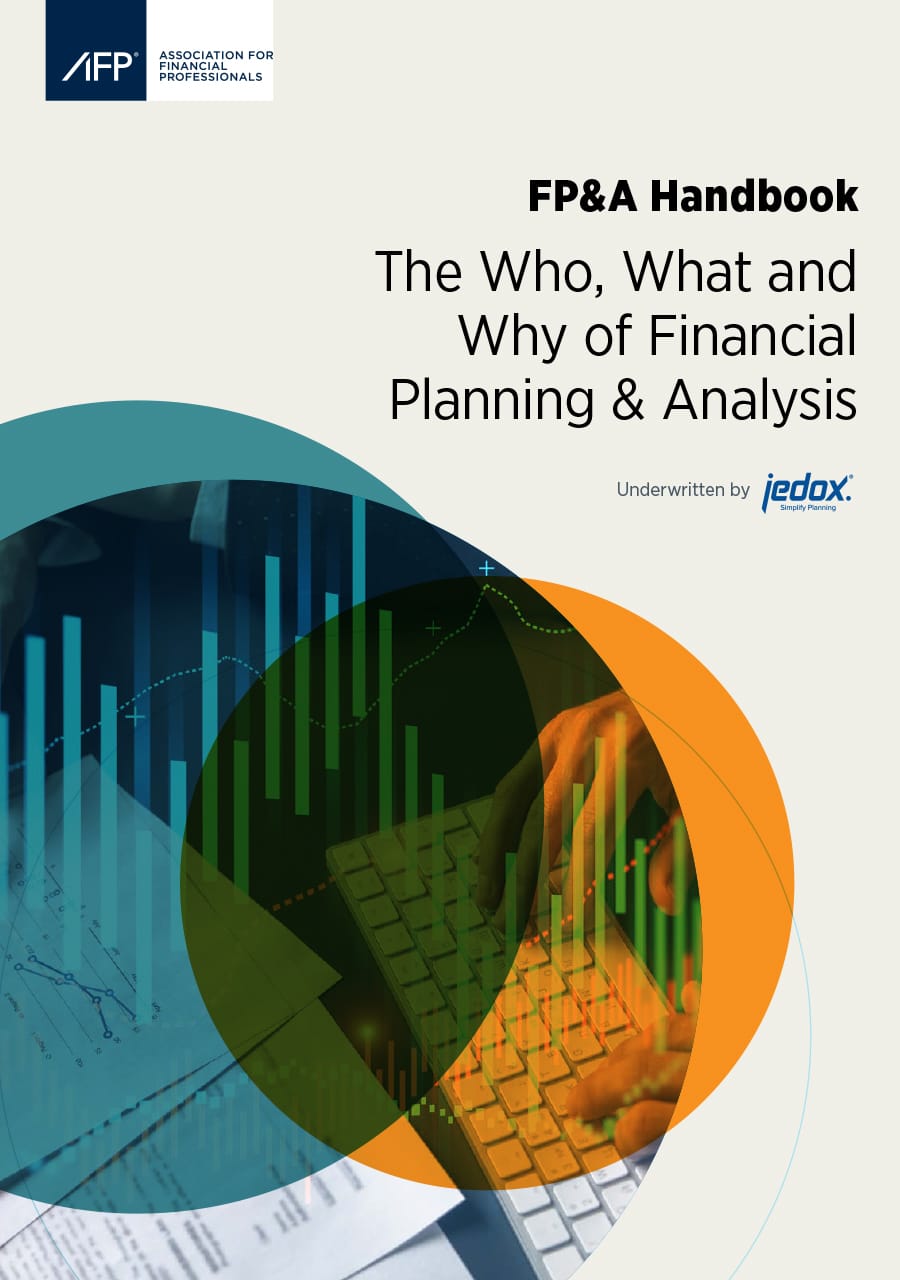
Your guide to the corporate financial planning process
How do you know at any point in time whether your company is solvent? How do you deal with financial bottlenecks? Is there a way to determine the future of your business? The answer to these questions and more are found in establishing solid corporate financial planning.
Early 2020 saw people around the world begin to stockpile necessities. An unprecedented crisis had begun, and global uncertainty mounted by the minute. As a result, many hoarded items such as toilet paper, dry pasta, and other commodities as a safeguard for an uncertain future.
For companies, money is that safeguard. Businesses should always be solvent and have enough cash to pay outstanding bills, make investments when there is a surplus, and reduce expenses when it slips into the red. But how do you know if your business is always solvent? To stay on top of your income and expenses, you need a solid corporate financial plan and related financial KPIs. Learn how to create one in our guide to the corporate financial planning process.
In this post, we will look at what you should consider in the corporate financial planning process, what pitfalls to avoid, and how to outperform the competition.
What is the corporate financial planning process?
Corporate financial planning is a foundational portion of corporate planning and an important business management tool. It forms the basis for future financial decisions. In the corporate financial planning process, all financial data of a company is recorded and evaluated. It enables you to determine how efficiently your company is operating. If the assessment is positive, the financial plan may be more convincing to investors to invest profitably in your business.
Company founders often consider financial planning, but the financial plan also plays a central role beyond the initial phase of a business. If the corporate financial planning process is done correctly, the plan will show your liquid assets at any point in time. That way, you will always know if your business is financially sound or if action is required. Think of the financial planning process as an investment in the future. If you want your business to succeed in the long run, it will be one of your most important investments. Your corporate financial plan influences future decisions by shining a light on performance. This enables continuously compare target and actual status and adjust your plan if necessary.
What is the goal of corporate financial planning?
The goal of corporate financial planning is to use the available resources—primarily financial resources—as strategically as possible. With the help of a corporate financial plan, you can determine cash requirements, reduce financing expenses, and make forward-looking decisions based on accurate plans.
The importance of financial planning for your company
The tasks of your corporate financial plan are derived from your individual objectives. You should know at any given point in time how much liquidity you need and how many of them are already available. To do this, you need a comprehensive overview of the amount and number of incoming and outgoing payments and due dates. A solid financial plan allows for transparency about the company’s performance and ensure accuracy for future planning.
It also allows you to determine the cash requirements for the next days, weeks, and months and balance with the resources available. If you compare planned and actual values, the plan can also serve as a controlling tool. If there are deviations of more than 5–10 percent, action must be taken to address the deviations. For example, if you have higher costs than originally planned, or if you have higher surpluses, you can think about opportunities for investments.
It’s also important that the corporate financial planning process is integrated in the overall planning process of a company. Integrated financial planning is a vital component of modern planning that supports long-term business performance.
Types of corporate financial planning
In corporate financial planning, there is a distinction between operational and strategic planning, and between short-term and long-term planning.
The time periods used for your organization’s planning will depend on what you need to map and the goals of your planning. In the next section, look at which time periods are best to use in your planning.
What planning time periods should you consider in your corporate financial planning process?
A strong corporate financial plan will help you maintain an overview of your company’s financial performance. The use of different planning time periods will achieve different goals.
Operational planning extends a maximum of one year into the future, so it can also be considered short-term. Shortfalls and surpluses become visible here. Depending on the company’s performance and planning needs, you can also depict periods of days, weeks, or months. This is valuable if your organization’s planning includes strong fluctuations.
In tactical planning, a period of two to five years is normally used. Finally, strategic planning covers more than five years. It is used for long-term capital coverage or to determine long-term capital requirements. However, since long-term planning does not provide information about the capital structure, no ideal financing decisions can be based on it.
In practice, it is best to draw up a detailed plan in the first year. From the second year, you can plan quarterly, and from the third year, update your plan annually. The corporate financial plan should cover a time span of three to five years.
Steps in the financial planning process
There are different elements you should consider in your corporate financial plan. These are some of the most used elements that provide the most value in your planning process:
Sales planning
Sales planning is a key part of the corporate financial plan. Commonly spanning between two and five years, it often serves as a decision-making aid for banks when granting loans. If there is data from previous years, it should be included in the strategic sales plan, as well as capacity limits and, depending on the industry, seasonal restrictions. While much of this information may be an estimate, you can still track in the weeks, months, and years thereafter whether your sales are developing according to expectations or whether there are deviations which should be addressed.
Capital Requirements planning
The capital requirements plan is another sub-plan of corporate financial planning. It determines what capital requirements will arise in your company in the next few years. Capital requirements include start-up costs (in the initial phase of companies), fixed assets, and inventories. Potential losses should also be planned for. Supplement your capital requirements planning with financial requirements planning to learn where your financial resources will come from to cover the capital requirements. These usually come from equity and borrowed capital.
Investment planning
The amount of your planned investments depends on your individual business model. For example, a freelance professional will probably have lower investments in basic equipment compared to opening a restaurant. But even beyond the start-up phase, the investment plan allows you to record expansion investments that may become necessary in subsequent years. Plan for the months when you want to invest so the money is available when needed.
Liquidity planning
Liquidity planning complements the other sub-plans. All variables that affect the level of the account balance are included in this plan. These include tax arrears and advance payments, redemption payments, borrowings, and the like. The aim is to always ensure the company’s solvency in the future. The entire future capital requirement is derived from the liquidity plan. This makes this subplan one of the most important for companies. Liquidity planning should cover a time span of six to twelve months and, if possible, include the past two years in the analysis.
All sub-plans build on each other and interact with each other. Accuracy is very important, because errors can have a negative domino effect on the rest of your planning. Other sub-plans that you can include in your financial planning are the budgeted income statement, the budgeted balance sheet, the profit and loss statement, the cost planning, the profitability calculation,> and the contribution margin calculation. You decide which of the sub-plans are important in your financial planning process.
Advantages of financial planning
- Being better prepared for emergencies—Ideally, an emergency won’t occur at all because your financial plan will let you know in advance where bottlenecks may occur and how to respond to them.
- Faster response times—If an unforeseen event does occur, you can react to it quickly because you already have an overview of the entire company and can easily address deviations.
- Enabling stable planning, even in the long term—Accurate corporate financial planning ensures better long-term business performance.
- Clearly defined strategy and goals—Knowing the financial performance of your company, short term and long term, means you can safely build on it.
- Increased transparency in the company—Not only do you always know where your company stands, but you can also offer greater security to your investors.
Avoid these mistakes in your corporate financial planning process
When dealing with the corporate financial planning process, you want to know and avoid potential pitfalls. Let’s look at some common mistakes.
- Your sales planning is unrealistic—The biggest pitfall is to assume that sales will increase continuously, as such a trend is very unlikely. You will usually run up against capacity limits, which accurate planning can help you spot before it becomes a problem. If you make mistakes in your sales planning, this will in turn affect your liquidity planning. You don’t have to do pessimistic calculations, but it’s better to have realistic sales plans.
- Taxes are not considered—Be aware that you need to include gross and net values as well as sales tax in your planning and be careful not to mix the values. Net values are important for the income statement (P&L) and gross values for liquidity planning. There are other types of taxes depending on the business type: corporate income tax, trade tax, sales tax, and tax prepayments—and they all need to be included in the corporate financial planning.
- Payment targets are not met—It happens more often than you think: a customer makes an agreed payment a month or two late. You think, “No problem, he paid after all.” However, the delay affects your liquidity planning, because you are probably also bound by payment requirements and, in the worst case, cannot meet them. Be very clear and ensure you include payment terms in your calculations, as they will affect your capital requirements.
- Wages and ancillary wage costs are forgotten in planning—While founders might pay their wages through private withdrawals, in larger companies the founders and managing directors are usually also employees. When preparing the financial plan, all wages as well as the corresponding ancillary wage costs must be considered. Otherwise, you will quickly get distorted planning results.
- Capital requirements are underestimated—Often, capital requirements are underestimated because things like repair costs are not considered, or sales are calculated too optimistically (see above). In both cases, you need more capital than you expected and, in the worst case, you risk sliding into insolvency. Carefully evaluating your capital requirements ensures a sound corporate financial plan.
- Heavy dependence on spreadsheets—This is another source of errors that is often underestimated. Excel is one of the most used tools for financial planning and effective when used correctly. However, it is precisely this that can often represent the greatest hurdle. The partial plans of the entire financial planning process are complex in themselves. Bringing together many spreadsheets from different departments and people, errors and chaos can ensue. One calculation error in one of the spreadsheets, one wrong formula, wrong or deleted reference values, and you get distorted results. Then you risk making decisions based on bad data that can have a negative impact on the future of your company. So, your plan should be as simple and accurate as possible. Relying solely on spreadsheets and manually checking all values several times will cost you valuable time and resources. In the end, you may still not be completely sure whether everything is correct. There’s a better way that supports modern business planning. Give your planning the support it needs with a modern solution that provides you with a single source of truth, accurate planning, and returns valuable time for more strategic business decisions. Jedox automates workflows in your corporate financial planning process and allows you to continue working in a familiar Excel environment. But instead of each department submitting their own spreadsheet, collaboration across one database with a common view of the data is possible. Don’t lose data, reduce errors, and end the tedious process of reconciling individual spreadsheets before you can even start your calculations. See the impact of changes in your planning in seconds, not days and weeks.
Companies that plan with the Jedox platform save significant time throughout the entire corporate financial planning process to get better insights and drive better decisions.
5 questions to evaluate your corporate financial planning process
- Do you know the exact amount of cash and cash equivalents? Perhaps a monthly overview is sufficient, but it may be important for you to know exactly how your company’s liquidity is doing on a weekly or daily basis.
- What are your plans for future investments in your company? Will additional funds be needed for expansion of individual departments, for new projects, or more generally for business growth?
- Is there a need for replacement of equipment, plant, machinery, and the like in the coming months? How does your demand planning look?
- Do you have sufficient funds available for all these factors?
- Where will you find more capital if there is a shortage?
Conclusion
As the world recovers from a global pandemic, uncertainty still lingers. While many have become accustomed to the uncertainty and no longer feel the need to stockpile items like toilet paper or pasta, business uncertainty is still very tangible for companies of all sizes. Where do we go from here? Where will we be in two, five or ten years? Long-term business success means modern integrated business planning. A corporate financial plan provides you with vital transparency and accuracy to ensure your organization can remain agile and resilient.





